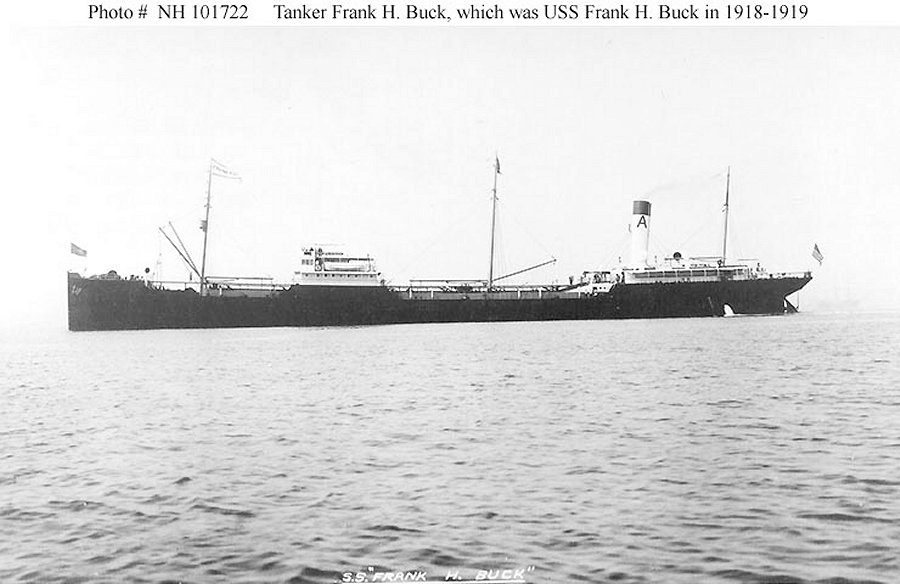TV Frank H Buck
American oil tanker lost in a collision off San Francisco. No casualties.
Year Built
1914
Year Sank
1937
Depth
20 ft (6.1 m)
Difficulty Level
Advanced

The Frank H Buck in 1914 not long after being launched in San Francisco. She later served in the US Navy as the USS Frank H Buck (ID-1613) and successfully attacked U-155.
TV Frank H Buck
Wreck Location
Frank H Buck lies just offshore of Mile Rock Beach southwest of Lobos Rock. The wreck can be seen easily at low tide with the steam engines breaking the surface. The wrecks are among the best known in the area and among the most visible in the state of California alltogether. NOAA has done a full sonar scan of the remains as of 2016. It's possible the bow still lies further out to sea closer to Mile Rock and Little Mile Rock. The area has a very strong current, powerful waves and sharp rocks, meaning its not recommended to dive the Frank H Buck without proper training and experience. Even if dived, there probably isn't a whole lot to see, given that the wreck was partially removed and smashed to pieces since the sinking in 1937.
~ GPS Shipwreck Location ~
Latitude: 37° 47' 6.8244" N Longitude: -122° 30' 39.7296" W
Description

The TV Frank H Buck was built in 1914 by the Union Iron Works in San Francisco, California for the Associated Oil Company. It was named after the vice president of the oil company and christened by Mr. Buck's niece. In September 1914, the Frank H Buck was caught in a storm off the Oregon coastline near Cape Meares, when the freighter Francis H Leggett sank violently and suddenly taking 68 of her 70 passengers and crew with her leaving only two survivors. The Frank H Buck immediately went to the scene looking for survivors. She thankfully rescued survivor George Poelmann from the freezing pacific waters and transferred him to the San Francisco and Portland liner Beaver. In 1918, the Frank H Buck was comissioned into the United States Navy as USS Frank H Buck (ID-1613). During her brief naval service, Frank H Buck attacked and damaged German submarine U-155 with her deck guns. After the war, she was returned to oil tanker service with Associated Oil.
On March 6, 1937, Frank H Buck was inbound to Martinez, California in the San Francisco area from Ventura, California (Los Angeles area) with a load of oil. As she came to the mouth of the fog covered Golden Gate, the ocean liner President Coolidge of the Dollar Line rammed the Frank H Buck in a case of misunderstood signals. The crew immediately launched the lifeboats and evacuated the Frank H Buck while the President Coolidge signaled her whistle for assistance. Frank H Buck sank bow first. Despite her bow touching bottom, the stern refused to sink. Local law enforcement and the Coast Guard rescued her crew. In time, the oil tanker split in half, the stern section crashing into the rocks off Mile Rock Beach. The remnants of the wreck were later detonated and partially removed.
Footnotes
Frank H Buck and her sister ship the Lyman Stewart were both lost on the same beach, both due to fogbound collisions and both crews survived without a single loss. Both wrecks were dynamited and partially removed leaving mostly only the equipment such as the big steam engines left. The losses were within 15 years of each other. The strange coincidence was publicized with an illustration of the Frank H Buck sinking in an edition of the popular book of oddities; Ripley's Believe It Or Not!